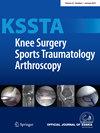Neutral and constitutional coronal alignment yield similar outcomes in total knee arthroplasty at mid-term follow-up using the coronal plane alignment of the knee classification
Abstract
Purpose
Achieving neutral coronal mechanical alignment in knee arthroplasty is traditionally considered crucial for implant longevity and function. However, recent studies suggest alternative alignment strategies. This study examines the correlation between preoperative and postoperative coronal alignment and patient-reported outcome measures (PROMs) at midterm follow-up. We hypothesised that preserving a patient's constitutional alignment would yield superior results, whereas overcorrection toward neutral alignment would lead to poorer outcomes.
Methods
Data from 369 knee arthroplasties in 335 patients at a tertiary hospital, all performed aiming for mechanical alignment, was analysed. Coronal alignment and joint line obliquity were measured pre- and postoperatively using long-leg radiographs. coronal plain alignment of the knee (CPAK) classification was determined. PROMs, including the Oxford knee score (OKS), pain visual analogue scale (VAS) and EuroCol 5-dimensions (EQ.5D) VAS scores, were collected with a mean (standard deviation) follow-up period of 5.7 (1.6) years. Logistic regression was used to assess the association between coronal radiological measurements, CPAK classification, and PROMs, adjusting for age, sex and body mass index (BMI).
Results
No significant association was observed between maintaining the same coronal CPAK phenotype at the mid-term follow-up and patient outcomes. Patients who achieved postoperative neutral coronal alignment had a comparable mean OKS yet demonstrated a higher likelihood of reporting an excellent OKS. In cases where coronal alignment was over-corrected and crossed over from valgus to varus or vice versa, the OKS was 5.3 points lower (−9.3, −1.2, 95% confidence interval [CI]: p = 0.011), with an odds ratio [OR] of 3.1 (1.5, 6.7, 95% CI: p = 0.003) for a poor OKS, comparing patients who did not cross over to the opposite coronal alignment.
Conclusion
At the mid-term follow-up, patients with postoperative neutral coronal alignment demonstrated similar outcomes to those who maintained their preoperative constitutional alignment. Patients who had crossover from varus to valgus or vice versa exhibited significantly poorer results.
Level of Evidence
Level II.


 求助内容:
求助内容: 应助结果提醒方式:
应助结果提醒方式:


